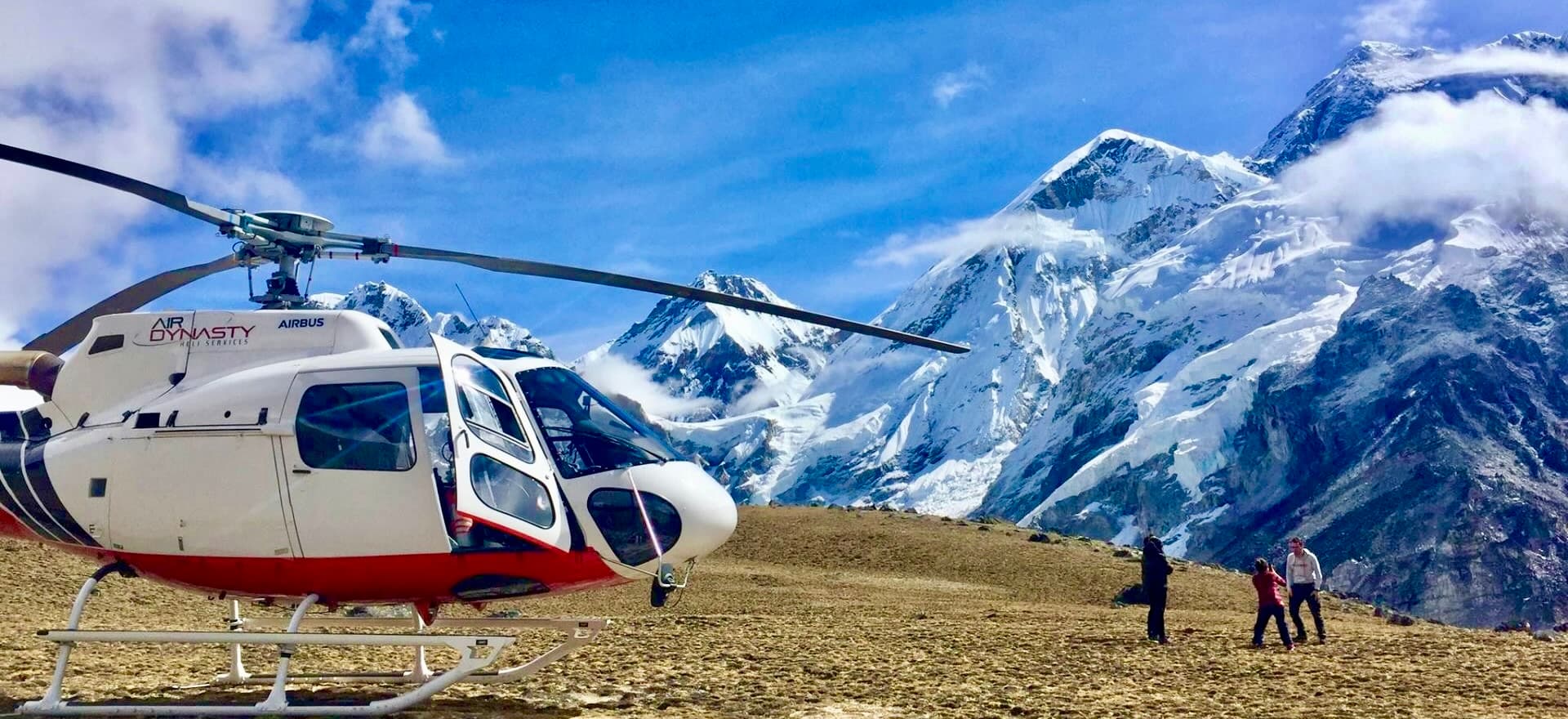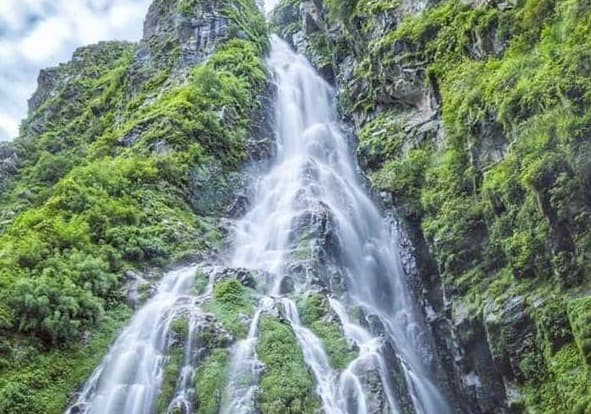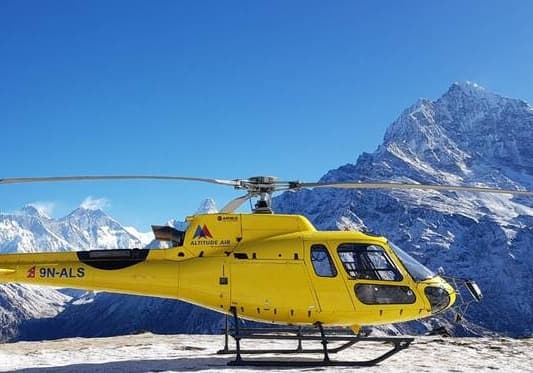Best Time For Everest Helicopter Tour
The Everest Helicopter Tour is a surreal experience, offering adventurers a bird's eye view of the world's highest peaks. Organized by renowned travel companies like Luxury Holidays Nepal Pvt. Ltd. The time of year, like other outdoor activities in mountainous areas, has a significant impact on the whole experience. Each season brings with it a unique hue, a different facet of the Everest region, ensuring that every trip, irrespective of its timing, remains etched in one's memory for a lifetime.
Spring (Pre-Monsoon) and Autumn (Post-Monsoon) are traditionally highlighted as the peak seasons for this tour. The skies during these periods are often crystal clear, offering unhindered panoramic views of the Everest range. Yet, it would be an oversight to dismiss the charm of the Monsoon and Winter seasons. While monsoons drape the region in lush greenery, winter turns it into a serene snowy paradise.
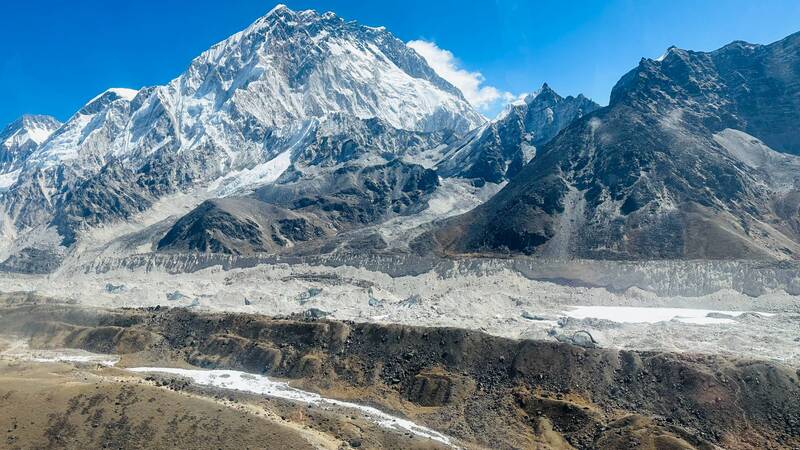
Deciding on the best time for the Everest Helicopter Tour can be challenging, especially when each season holds its distinct allure. It's not just about clear skies and visibility; factors like crowd density, flora and fauna, and even the vibrancy of the Everest Base Camp play into this decision.
The Everest Helicopter Tour is a transformative journey, regardless of when you choose to undertake it. Whether you're looking to capture stunning photographs, enjoy a tranquil flight, or immerse in the festive spirit of the base camp, there's a perfect time for everyone. Let's delve deeper into the specifics of each season to guide your choice for this once-in-a-lifetime experience.
Highlights of the Everest Helicopter Tour
The Everest Helicopter Tour is a mesmerizing journey, a blend of adrenaline and unparalleled beauty. Organized travel companies like Luxury Holidays Nepal Pvt. Ltd., this tour offers a unique vantage point of the majestic Himalayas. Let's delve into the standout highlights that make this aerial adventure an unforgettable one.
-
Everest Base Camp Flyover: Experience the thrill of soaring above the Everest Base Camp, the starting point for many mountaineers aiming to conquer the world's highest peak. This iconic location is a bustling hub of activity during the peak climbing seasons.
-
Close-up Views of Mount Everest: Gaze at the sheer grandeur of Mount Everest from a proximity that few other tours offer. The bird's eye perspective of the mighty Everest and its neighboring peaks is truly awe-inspiring.
-
Kala Patthar Landing: The tour often includes a brief landing at Kala Patthar, one of the best viewpoints in the Everest region. From here, you can get panoramic views of Everest and the surrounding peaks.
-
Spectacular Glimpses of Himalayan Peaks: Apart from Everest, the tour offers majestic views of other notable peaks such as Lhotse, Nuptse, Ama Dablam, and Thamserku. The Himalayan panorama is a feast for the eyes, with snow-clad peaks stretching as far as the eye can see.
-
Dramatic Landscapes of the Khumbu Glacier: Witness the rugged beauty of the Khumbu Glacier, one of the largest glaciers in Nepal. The aerial perspective of this massive river of ice winding its way through the mountains is a sight to behold.
-
Glimpses of Sherpa Settlements: The tour provides views of iconic Sherpa towns like Namche Bazaar, Tengboche, and Lobuche. These settlements, with their unique architecture and picturesque locations, add cultural richness to the scenic extravaganza.
-
Everest Region's Diverse Ecosystem: While soaring above, you'll also get to appreciate the Sagarmatha National Park's diverse ecosystem. Depending on the season, witness verdant forests, alpine meadows, and glistening snowfields.
-
Insights into Local Culture: Some helicopter tours offer brief stopovers at Sherpa villages or monasteries, providing a window into the rich cultural and spiritual heritage of the region.
The Everest Helicopter Tour is more than just a sightseeing adventure. It's a journey that encapsulates the heart and soul of the Himalayas – from its towering peaks and glaciers to the resilient spirit of its people. Whether you're a seasoned traveler or someone seeking a unique experience, this tour promises memories that will last a lifetime.
Best Time For Everest Helicopter Tour
The Everest Helicopter Tour offers an exhilarating and intimate view of the majestic Himalayas, including the world-famous Mount Everest. When it comes to such high-altitude tours, timing is crucial to ensure the best visibility, weather conditions, and overall experience. Here’s a comprehensive breakdown of the best times to embark on the Everest Helicopter Tour:
Spring (Pre-Monsoon): March to May
Spring, specifically from March to May, is often cited as one of the most favorable times for various activities in the Everest region, including the Everest Helicopter Tour. This period, just before the onset of the monsoons, is characterized by its pleasant weather and the spectacular rejuvenation of flora. Let’s delve into the specifics:
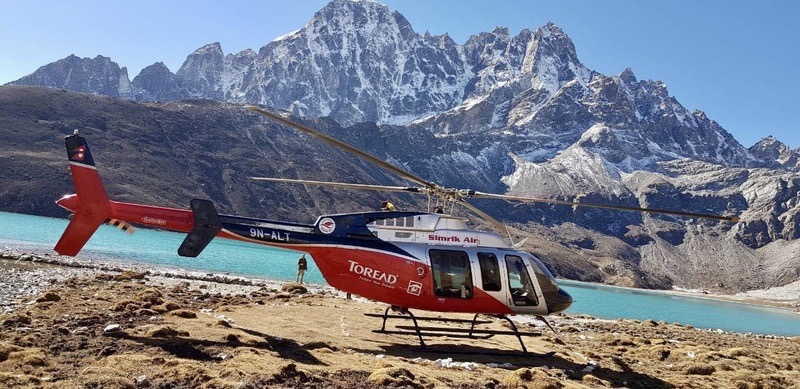
Visibility: During the spring months, the Himalayan region enjoys predominantly clear skies, especially during the mornings. This clarity ensures that tourists get uninterrupted, panoramic views of the majestic mountain range, including the towering Everest itself. While occasional afternoon clouds might drift in, the mornings are generally pristine, offering a crystalline view of the landscape below.
Temperature: Spring brings with it mild and warm temperatures. The days are comfortably warm, which makes the helicopter tour experience pleasant. As with any high-altitude region, mornings and nights can still be chilly, so it’s advisable to dress in layers.
Flora: One of the most enchanting aspects of visiting the Everest region during spring is the bloom of rhododendron forests. The mountainsides come alive with a riot of colors as different species of rhododendrons bloom, adding a vivid contrast to the white peaks and blue skies. This natural spectacle enhances the visual appeal of the helicopter tour manifold.
Experience: Spring, being a prime time for mountaineering, sees the Everest Base Camp come alive with activity. Climbers and trekkers from all over the world gather here, preparing for their summit bids or treks. Flying over this area in a helicopter, one can witness the colorful tented city and feel the palpable excitement in the air.
Considerations
-
Popularity: Given the optimal conditions, spring is a peak season for Everest-related activities. This means the tours might be busier, and there's a higher demand for spots. Early booking is advisable to secure your preferred dates.
-
Changing Weather: While spring is generally stable, it’s the prelude to the monsoon. Hence, occasional weather changes or brief showers can occur as May progresses.
If you're looking for a combination of clear views, pleasant temperatures, and the added bonus of vibrant flora, the spring months of March to May are an ideal choice for the Everest Helicopter Tour. The landscape's vibrancy and the buzzing activity at the base camp offer an experience that's both visually and emotionally rewarding.
Autumn (Post-Monsoon): September to November
Autumn, stretching from September to November, is another highly recommended season for the Everest Helicopter Tour. Often paralleled with the spring season in terms of its attractiveness, the post-monsoon months bring freshness and clarity to the Everest region that is unmatched. Let's dive into the details of this captivating season:
Visibility: Post the monsoon rains, the atmosphere in the Himalayan region is washed clean of any lingering dust or haze. This results in incredibly clear skies, often offering some of the best mountain views of the entire year. The sharpness and detail with which one can see the Himalayan peaks, including Everest, during these months are truly unparalleled.
Temperature: Autumn offers a gentle transition from the warmer monsoon months to the colder winter. Daytime temperatures are cool and comfortable, ideal for activities like helicopter tours. However, as November progresses, there is a perceptible drop in temperature, especially during early mornings and nights.
Landscape: Autumn paints the Everest region in golden hues. The forests, while not as vibrantly colored as during the spring, take on an earthy palette of yellows, oranges, and browns. This offers a stark and beautiful contrast to the snow-capped peaks that start receiving their first snowfalls of the season.
Experience: Just like spring, autumn is a favorite among mountaineers and trekkers. The Everest Base Camp sees another influx of adventure enthusiasts, turning it into a hub of international camaraderie. The helicopter tour provides an aerial perspective of this activity, offering a glimpse into the heart of mountaineering culture.
Considerations
-
Peak Season: Given its clear skies and stable weather, autumn is a highly popular time for all Everest-related endeavors. This means helicopter tours are in high demand, and early bookings are strongly recommended.
-
Early Winters: As November nears its end, the region starts transitioning into winter. While daytime temperatures are still manageable, mornings and evenings become colder. Adequate preparation in terms of clothing can ensure a comfortable experience.
Autumn offers a pristine, clear, and tranquil experience for the Everest Helicopter Tour. The mountains stand tall, unobscured by clouds, against azure skies, and the entire region resonates with the spirit of adventure. If you're seeking crystalline views and a taste of the Himalayan autumn, the months between September and November are an impeccable choice.
Winter: December to February
The winter months, spanning from December to February, offer a serene and snow-blanketed experience for those venturing on the Everest Helicopter Tour. The landscape undergoes a transformation, with the raw beauty of the Himalayas at its core. Let's unpack the characteristics and allure of the Everest region during this chilly season:
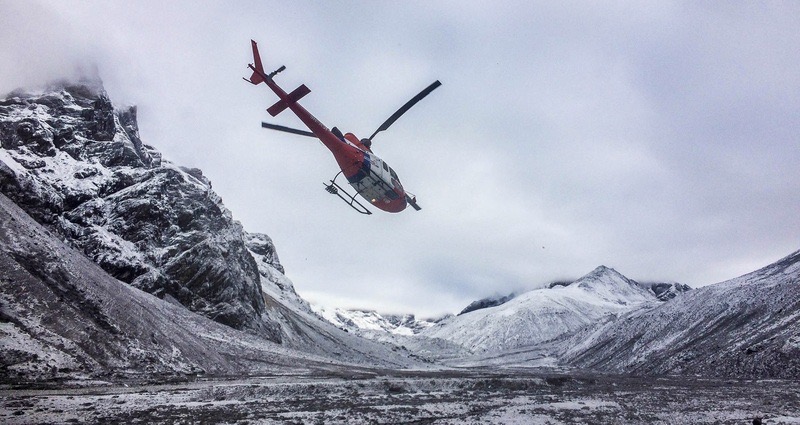
Visibility: Winter provides consistently clear skies, especially during the early mornings. The atmosphere remains crisp, ensuring that the views of the Himalayan peaks, including the formidable Everest, are sharp and unobstructed. The mountains, now laden with snow, gleam brilliantly against the backdrop of deep blue skies.
Temperature: As expected, winter brings with it colder temperatures. Daytime might still offer milder conditions, but early mornings, late afternoons, and nights can be exceptionally cold. It's essential to be well-prepared with warm clothing, especially for high-altitude helicopter rides.
Landscape: The dominant theme of winter in the Everest region is snow. The mountains, valleys, and trails are often covered in a blanket of white, presenting a picture of a serene, frozen wonderland. This snowy panorama, unique to winter, gives the landscape an ethereal beauty.
Experience: Unlike the bustling activity during spring and autumn, winter witnesses a quieter Everest Base Camp. This tranquility offers a more peaceful and reflective experience. While fewer trekkers and climbers can be seen, those who do brave the cold are rewarded with solitude and unspoiled beauty.
Considerations
-
Cold Conditions: The primary consideration for winter is the cold. Ensuring you have the right gear – insulated jackets, gloves, beanies, and perhaps even hand warmers – can make the helicopter tour comfortable and enjoyable.
-
Unpredictable Weather: Despite generally clear skies, winter can occasionally bring unexpected snowfall or storms. Flexibility in plans can come in handy, as some tours might get rescheduled based on weather conditions.
-
Limited Operations: Not all tour operators might offer helicopter tours during the peak of winter, given the challenges posed by the cold and potential snow. It's advisable to check in advance and confirm bookings.
Winter offers a distinct and tranquil charm for the Everest Helicopter Tour. The snow-covered landscapes, pristine vistas, and calm environment make it a choice for those seeking solitude and the raw beauty of the Himalayas. If you're willing to embrace the cold, the winter months promise a unique and unforgettable journey above the world's highest peaks.
Summer (Monsoon): June to August
The summer months in the Everest region, running from June to August, are primarily characterized by the monsoon season. These rains bring about a transformation in the landscape, infusing it with life and vibrancy. The Everest Helicopter Tour during this period offers a unique perspective, different from the other seasons. Let’s delve into the specifics of touring during the monsoon:
.jpg)
Visibility: The monsoon season brings with it a mix of clear days and cloud-covered moments. On days when the rains relent and the clouds clear, the Himalayan range can be seen in all its grandeur, surrounded by lush greenery. However, there might be instances of cloud cover or fog, which can impact visibility, especially during heavy rain days.
Temperature: The summer months are warmer compared to other seasons. Humidity levels rise due to the rains, but the overall atmosphere remains relatively mild, especially at higher altitudes.
Landscape: The true magic of the monsoon season is the verdant transformation it brings about. The valleys and slopes are covered in a carpet of green, with waterfalls cascading down the mountainsides. The forests are dense and alive, offering a riot of colors, especially when wildflowers are in bloom.
Experience: The Everest Base Camp during the monsoon season is less crowded than during the peak trekking months of spring and autumn. While the trails might be wet and slippery, the helicopter tour provides a bird's eye view of the shimmering landscape below, where every nook and cranny seems to be sprouting with life.
Considerations
-
Weather Uncertainties: The primary challenge during the monsoon is the unpredictable weather. Flights might be delayed or rescheduled based on rain and visibility conditions. Flexibility in plans is crucial.
-
Landslides & Floods: The heavy rains can sometimes lead to landslides in certain areas, although this would more likely affect trekkers than helicopter tours. However, it's always good to be aware of the ground conditions.
-
Operational Challenges: Due to weather inconsistencies, not all tour operators might run regular helicopter tours during the monsoon. It's essential to check and confirm the availability in advance.
The summer months offer a refreshing and rejuvenating perspective for the Everest Helicopter Tour. The landscapes are lush, and the mountains, when visible, stand as majestic contrasts against the verdant surroundings. If you're open to experiencing the Everest region's monsoonal mood, these months promise a different kind of beauty and charm. Just remember to be prepared for some rain and always have a backup plan in case of weather-related changes!
Why Choose Everest Helicopter Tour with Luxury Holidays Nepal?
When it comes to experiencing the grandeur of the Himalayas, especially the majestic Mount Everest, nothing compares to the bird's-eye view from a helicopter. Among the many operators offering this exceptional experience, Luxury Holidays Nepal Pvt. Ltd. stands out for several reasons. Here's why choosing us for your Everest Helicopter Tour can elevate your journey to new heights:
- Expertise and Experience: Luxury Holidays Nepal has been in the tourism industry for years, offering various travel experiences in the region. Their seasoned pilots and tour guides have extensive experience, ensuring you get the most out of your helicopter tour while prioritizing safety.
- Tailored Experiences: Every traveler is unique, and so are their preferences. We understand this and offer tailored helicopter tour packages that can be customized based on interests, ensuring that each guest has a memorable and personalized experience.
- Safety First: Safety is paramount when it comes to aerial tours. We ensure that all its helicopters are well-maintained, regularly inspected, and adhere to all safety standards. Additionally, the pilots are trained for high-altitude flying and are well-versed in handling any challenges that might arise.
- Exceptional Customer Service: From the moment you express interest until the end of your tour, the team at Luxury Holidays Nepal is committed to providing impeccable customer service. Their attentive staff ensures that all your questions are answered, concerns are addressed, and needs are met.
- In-Depth Knowledge: Beyond just offering a flight over the Himalayas, our guides provide enriching insights into the region's history, culture, and geography. This added layer of knowledge transforms the helicopter tour into an educational and enlightening experience.
- Competitive Pricing: Despite offering a luxury experience, we believe in providing value for money. Our tour packages are competitively priced without compromising on the quality or safety of the experience.
- Positive Reviews and Testimonials: One of the best indicators of a company's service quality is the feedback from previous clients. We boast numerous positive reviews and testimonials, attesting to their exceptional service and memorable experiences.
- Environmentally Conscious: We are aware of the delicate balance of the Himalayan ecosystem. We take steps to ensure their tours are eco-friendly, minimizing their carbon footprint and emphasizing sustainable tourism.
- Hassle-Free Bookings: With user-friendly platforms and responsive customer service, booking an Everest Helicopter Tour with Luxury Holidays Nepal is seamless and hassle-free, letting you focus on the excitement of the upcoming adventure.
- Strong Local Network: Having a strong network in the region ensures that all logistical needs are met promptly. Whether it's obtaining necessary permits, or coordinating with local authorities, Luxury Holidays Nepal has it covered.
When it comes to choosing an operator for the Everest Helicopter Tour, Luxury Holidays Nepal Pvt. Ltd. offers a combination of expertise, personalized service, and commitment to safety. Their reputation and dedication to offering unparalleled experiences make them a top choice for travelers eager to witness the unparalleled beauty of the Himalayas from the sky.
Important Notes on the Everest Helicopter Tour
Altitude Considerations: Even though you'll be flying and not trekking, you will be exposed to high altitudes, especially during landing points like the Everest Base Camp. Altitude sickness can affect anyone, regardless of age or fitness level. It's essential to understand its symptoms and communicate any discomfort to the crew immediately.
Weather Dependency: Mountain weather is notoriously unpredictable. It can change rapidly, affecting visibility and flying conditions. Tours might be rescheduled or delayed due to inclement weather. It's advisable to have some flexibility in your travel plans.
Packing Essentials: Even in warmer months, higher altitudes can be chilly. Layered clothing, sunglasses, and sunblock are must-haves. Cameras and binoculars can enhance the experience, but ensure they are securely strapped.
Flight Duration: While the actual flying time might vary, most Everest Helicopter Tours last between 3 to 4 hours, including landing and breaks.
Landing Points: Typical landing spots include Lukla, Kala Patthar, or a hotel with a vantage point. The duration at each landing site might be limited due to altitude concerns.
Health and Fitness: There are no strenuous activities involved, but it's advisable for passengers with specific medical conditions to consult with their doctors before the journey.
Environmental Concerns: The Himalayas are a fragile ecosystem. It's crucial to avoid leaving any waste behind and minimize any environmental impact during the tour.
Booking and Permits: Ensure you're booking with a reputable tour operator, like Luxury Holidays Nepal Pvt. Ltd., which will handle necessary permits and logistics.
Passenger Limitations: Helicopters have a strict weight and passenger limit. Typically, helicopters in the region can accommodate 4-6 passengers, but this might vary depending on the aircraft and altitude.
Insurance: Travel insurance that covers helicopter tours and potential evacuations in high-altitude regions is a prudent investment.
Embarking on the Everest Helicopter Tour is an experience of a lifetime. Being prepared and understanding the journey's nuances can greatly enhance the experience, turning it into a cherished memory that lasts forever.
If you need any further information, please contact us by email: at [email protected], Phone: at +977- 985 100 5129 (WhatsApp)
#Tags
Tripadvisor
5.0928 reviewsGoogle
4.8114 reviewsFacebook
4.1 recommend44 ReviewsTrustpilot
4.1 Great(5 reviews)- Trusted by50K plus traveller

